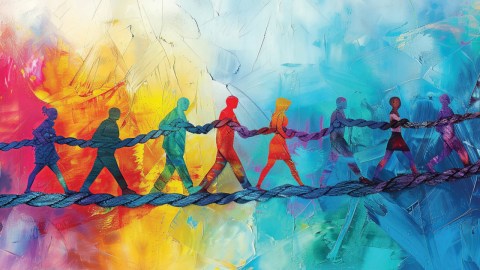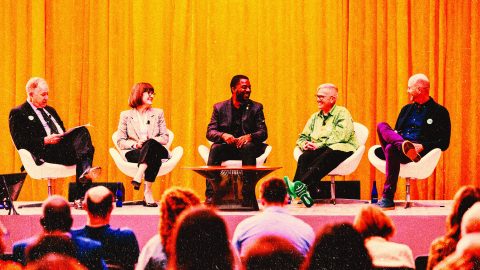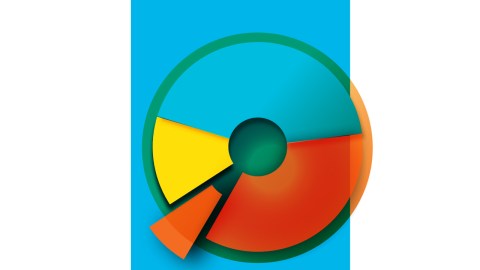Prepared remarks of Laura L. Lott
President & CEO of the American Alliance of Museums
May 8, 2017
Opening session of the AAM 2017 Annual Meeting & MuseumExpo
Good morning and welcome to the 2017 AAM Annual Meeting, the largest gathering of museum professionals in the world!
This year, I am so proud that the Alliance – and all of you – are taking on a bold and powerful theme: “Gateways for Understanding: Diversity, Equity, Accessibility, and Inclusion in Museums.” It’s a theme that requires us to ask a lot of difficult questions – of ourselves, of our institutions and of our field writ large – and to challenge the comfortable status quo.
How many of you have heard one of these statements in your museum?
- I want to focus on diversity and inclusion, but really, I’m just struggling to keep my lights on and pay my small staff.
- I’d love to have a more diverse board, but I need people who can contribute financially.
- I wish our staff were more diverse, but I can’t find anyone – and besides, we just have to hire the most qualified person for the job.
No doubt, many of us have heard – or thought or said – some of these things.
While there’s no denying that there are real challenges embedded in these statements, it is vital that we, as an Alliance representing every corner of this field, push past this short-sighted, status-quo thinking. We do this work, not only because it is the right thing to do, but because it benefits our museums and the communities we serve.
Our world is changing. Museums must figure out how to be accessible and welcoming, engaging and provocative. We must be inspiring to all people – including young people, who do not engage with museums in the same way past generations did. And we must engage those in our communities who may not have a strong tradition of museum-going. We have to challenge what we mean by “most qualified” and embrace the broad spectrum of our abilities as professionals. We need new audiences – and new voices on our boards, advisory committees, and staffs.
I know that many of you are having great success. Your institutions may already be more diverse and more inclusive than ever before! In a few minutes, we’re going to celebrate some of those people and programs leading the way forward. But, as a field, we have a long way to go.
Today, communities of all sizes around the globe are confronting racism, discrimination, and oppression. They’re struggling to recognize and reflect on tensions in their communities around immigration, religious expression, sexual orientation, gender identity, and the equal treatment of all people. It is in this context, that museums’ commitment to equity has never been more important.
This commitment requires that we hold a mirror up to ourselves – our own museums’ structures and priorities. When, internally, we fall short of our professed values of inclusion and equity, we must prioritize – indeed fight for – progress within our own institutions. And it must be done with the same zeal and the same critical eye with which we call attention to injustice and inequity in the wider world.
That can mean facing realities of discrimination…ageism…sexism….racism…ableism… in our field and in our museums that are pretty uncomfortable.
For the next three days in St. Louis and in the days and months to come, I challenge each and every one of us to have these conversations that push us out of our comfort zones. I ask you to challenge your assumptions, work to recognize your biases, and create a PLAN for the work YOU must do to build connections with and respect for those who have different backgrounds, values and viewpoints. I believe that in order to consider new ideas, set bold goals, and explore creative new ways to reach those goals… we must step outside our comfort zones.
I hope that by the time we leave this meeting, we’ll all be a little MORE comfortable getting UNcomfortable! That we’ll be better able to reflect upon and really discuss the imperative of being more diverse and more inclusive institutions – and better able to recognize the opportunities we’re missing by not taking more urgent action.
Annual Meeting/Changes
Speaking about getting uncomfortable… let’s talk about change!
For many years, AAM has been “the establishment,” the status quo, the battleship that takes so long to turn. But I, along with my amazing Board and staff, are working to change that. I want to highlight a few changes we’ve made right here at this meeting.
You may have noticed we’re trying out a new evening event format – Go Explore St. Louis! We’re offering more free networking events and opportunities to see this great city’s museums and neighborhoods.
Instead of one keynote, we have six diverse and inspiring featured speakers and panels relating to our theme – a few of them highlighted on the screen.
We invited a broader applicant pool for our annual meeting fellowships, focused on those from historically underrepresented groups – and awarded 65 fellowships (a 50% increase over last year), thanks to support from the Smithsonian and many of you who gave to our annual campaign. Let’s give our fellows and our supporters a warm welcome.
And although we have more than 4,000 museum professionals here, we know there are many more who cannot attend the annual meeting. So we asked ourselves, “How can we make the content and discussions happening here more accessible to those who are not in the room?”
Well, one great thing about being an alliance is that you don’t have to do everything yourself. So we reached out to the many bloggers and social media influencers in our field. We’ve invited a handful of them to attend and to chronicle the meeting so that more colleagues from our field can be included in the learning and sharing, even from a distance.
AAM Strategic Plan
Last year, in Washington, DC, I shared with you that one of my hobbies is flying a single-engine airplane. My other hobby is using flying as a metaphor, so let me try this one out…
There are many, many steps in flying a plane – with many checklists and lots of preparation. Before even starting the engine, one must study the weather and air traffic; inspect the plane; and, importantly, create a flight plan to travel from Point A to Point B. Last year, I unveiled the Alliance flight plan – or as it’s better known, our Strategic Plan.
Well, one year later, not only have we completed many steps to get the engine started, we have soared into the sky and are following our plotted course to become, with your help, the go-to source for inspiration, information and support for museum professionals across our field.
One year into our plan, I’m happy to report that you have embraced it – contributing even more of your time, talent and treasure than we could have hoped for. I thank you!
More than just the meeting theme, “Diversity, Equity, Accessibility and Inclusion in all aspects of museums programming and structures” is one of three strategic focus areas in our plan. And I am committed to making sure the energy and urgency and ACTION on these topics lasts well beyond this meeting!
As an example of our work together as an Alliance, I’m honored to co-chair a Diversity, Equity, Accessibility and Inclusion Working Group with one of my “she-roes” and this year’s Distinguished Service Award Winner, Dr. Johnnetta Cole. This working group includes some of the most insightful and dedicated people in our field, many of whom have been at this work for decades. Stop by the walls in the convention center to engage in some of the questions we’ve been thinking through. And come to our session Tuesday afternoon to learn about the group’s work to date.
Also with your help, AAM has built a resource hub full of toolkits, templates and reference materials to support your inclusion work.
Shortly, we’ll present our first Diversity, Equity, Accessibility and Inclusion awards.
And this may sound small, but it speaks volumes in my mind. With our allies across the field, we published an issue brief expressing our field’s commitment to issues of diversity, equity, accessibility and inclusion. You can find it alongside other policy statements we make on issues of vital importance to our field. This sends an important message to elected officials and to anyone else looking at our field from the outside. The message is that we take issues of inclusion seriously.
AAM’s work in this area has also been internal – challenging our own structure and operations. We’ve adopted new hiring practices that attempt to reduce the impact of the unconscious biases we all have. We’ve diversified AAM’s leadership team and invested in a new position, Director of Inclusion, which Dr. Nicole Ivy will assume this summer.
The Alliance Board has led by example too, becoming one of the most diverse boards in our field and allocating significant board meeting time to planning and evaluating inclusion efforts across the Alliance.
And we’re sharing our processes, struggles and lessons learned on the Alliance Labs site. Speaking of which…
Some of our most exciting work has been toward Access. That is… our commitment to delivering relevant content and superior user experiences. I’ll mention a few highlights.
The new Alliance Labs website gives you a place to share your stories, experiments and insights so that we can learn from one another across the museum field.
Our Online Sample Documents Library is a treasure trove of useful working examples from your fellow museums.
And in the coming year, look for a new mobile-friendly website that makes it easier to find the content you need, to find us, and most importantly, to find each other.
Our strategic plan also calls for engaging museum trustees and helping museum directors build stronger boards. Last fall, with the support of Northern Trust, we worked with BoardSource, to launch our Trustee Initiative with a first-of-its-kind survey on museum governance – the people, the work and the culture of museum boards.
While there are some bright spots, the results show that museum boards lag other nonprofit boards in many critical areas.
Some of you got a deep dive into the results this morning at our first Trustee Summit. And in the coming months, we will use the findings as a springboard for conversations with directors and trustees around the country – and ultimately to develop resources that help strengthen museum governance.
Another of our goals is Global Thinking – perhaps even more important given the surge in “America First” sentiment expressed by some. We know that our work depends on diverse viewpoints shaped by diverse experiences and backgrounds. And we know that we’re strongest when all of our partners and peers from around the globe feel welcome. I hope that in everything we do, you’re seeing more perspectives from outside of the field and outside of the US.
Please join us this November, as we convene our second “Conference of the Americas” in Medellín, Colombia.
Advocacy
And finally, your Alliance is also leading the charge in advocating for museums in Washington – not only through the annual Museums Advocacy Day, but we’ve created an impressive array of tools for you to speak up for museums anytime, from anywhere.
A record number of advocates participated in Museums Advocacy Day this year. They and thousands of others continued to advocate online, responding to Alliance advocacy alerts with tens of thousands of emails and calls to your legislators about the importance of federal funding for museums and the culture sector, of protecting charitable giving, and other critical issues.
We. Were. Heard! Last week, Congress finalized and the President signed a final 2017 Federal budget. Despite very strict limits on total domestic spending, it contains a number of small increases for programs that benefit our nation’s museums.
This would not have happened without the strong allies and bipartisan support that, together, we have been building in Congress and around the country for years.
However, we cannot declare victory – nor let down our guard. We continue to face threats that are very real.
If you are still on the sidelines – and too many of you are – NOW is the time to speak up for museums! Our field, our communities, and our country need you!!
Closing
I want to conclude with a few words from a meeting I had recently with Kathy Roth Duquet, the head of Blue Star Families, which works to support today’s military families. Some of you know about their partnership with the National Endowment for the Arts on the Blue Star Museums program. It provides free admission to museums for military members and their families over the summer.
Kathy said, “Why is it so important that service men and women are so openly welcomed into museums? It’s important because our museums house and protect our patrimony – what our communities have decided is important to us, to America, to the “idea” of America. That’s why we serve. It’s not glamorous or easy work, serving in the military. And these days we’re not fighting for borders. We are sacrificing – fighting – for the ideas housed in our nation’s museums!”
This is what’s at stake, colleagues Let’s get to work!








